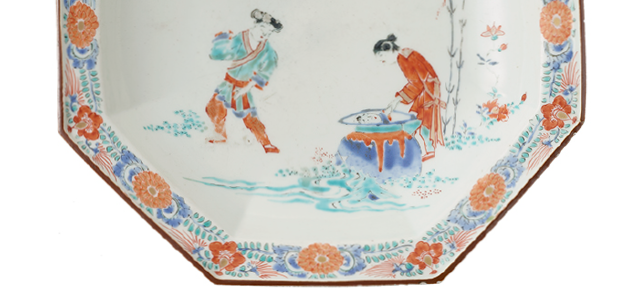


In the 1610s, the first Japanese porcelain was produced in the village of Arita in Bizen province, followed about 30 years later by the first generation Kakiemon’s success in firing porcelain with overglaze enamels. The earliest Kakiemon wares are characterized by the deep tones of the overglaze paint.
In the 1670s, responding to high demand from the Dutch East India Company, which handled all overseas exports, overglazed porcelains and other Kakiemon-style porcelains were produced to even higher quality standards. Ethereal designs were painted in an uncrowded way that allowed the beauty of the underlying milky white background to be fully appreciated.